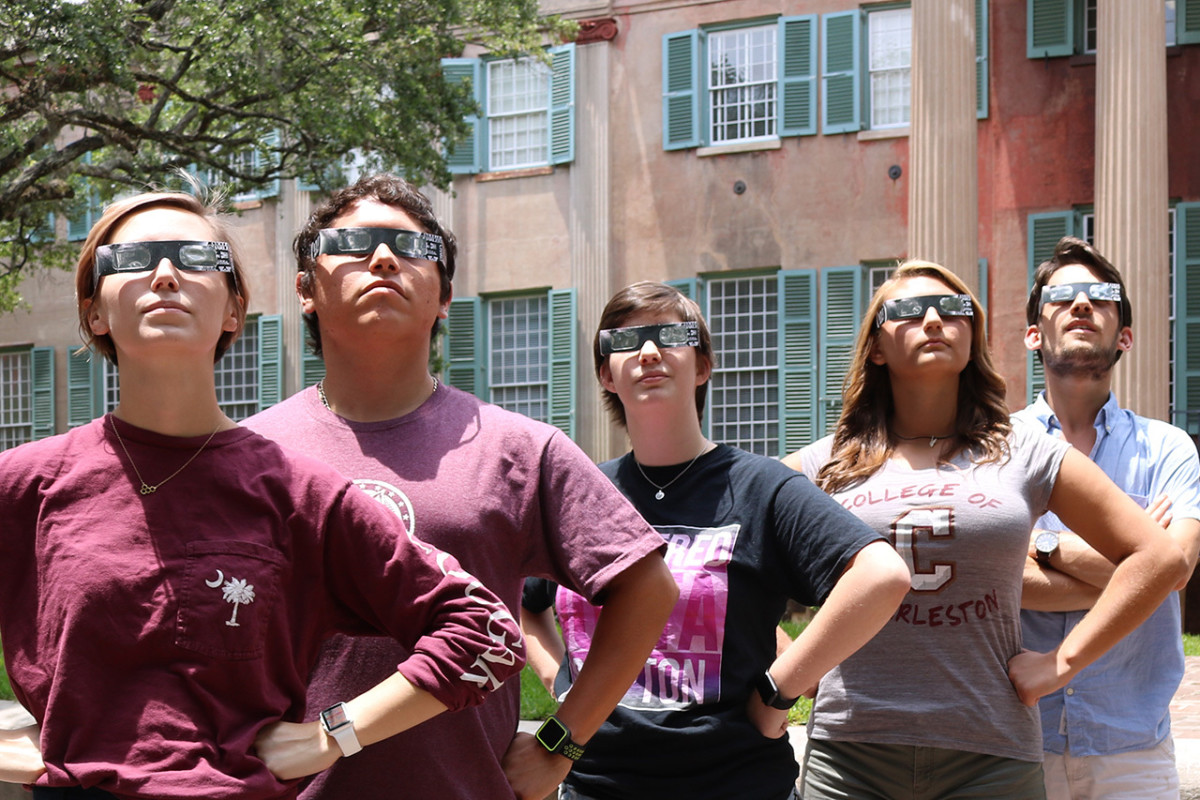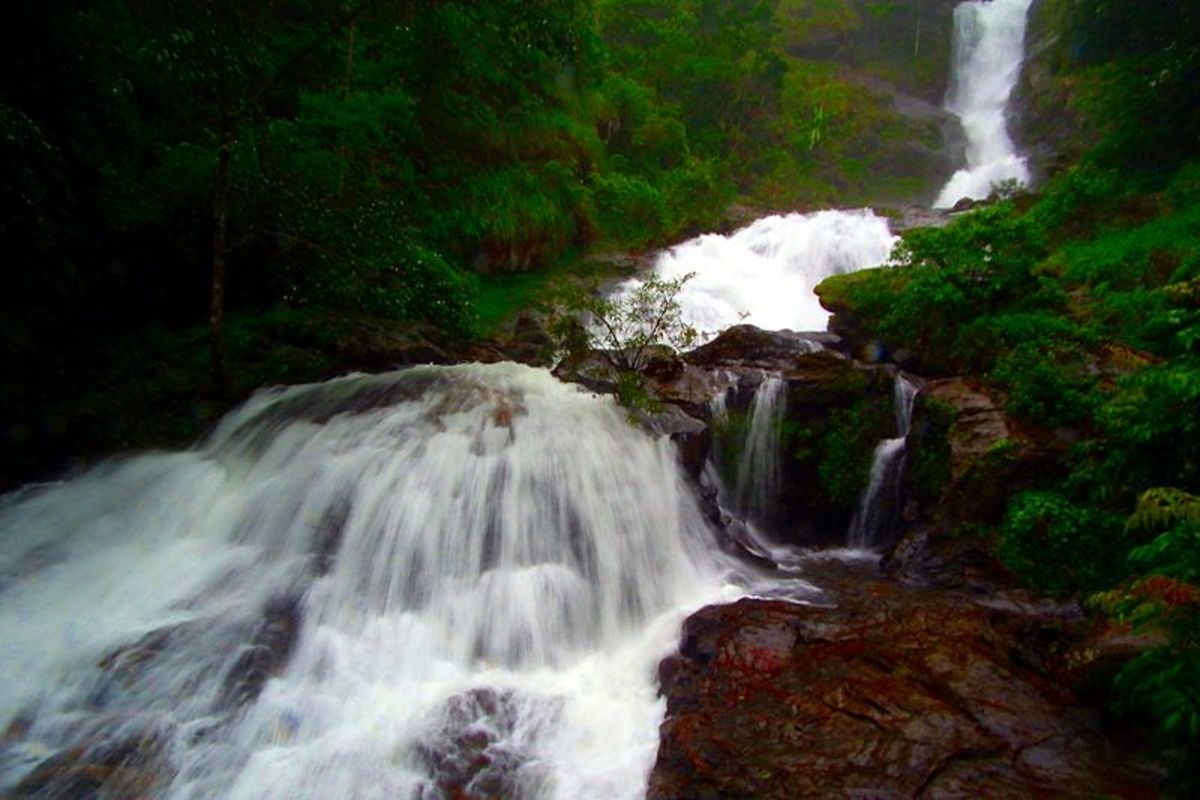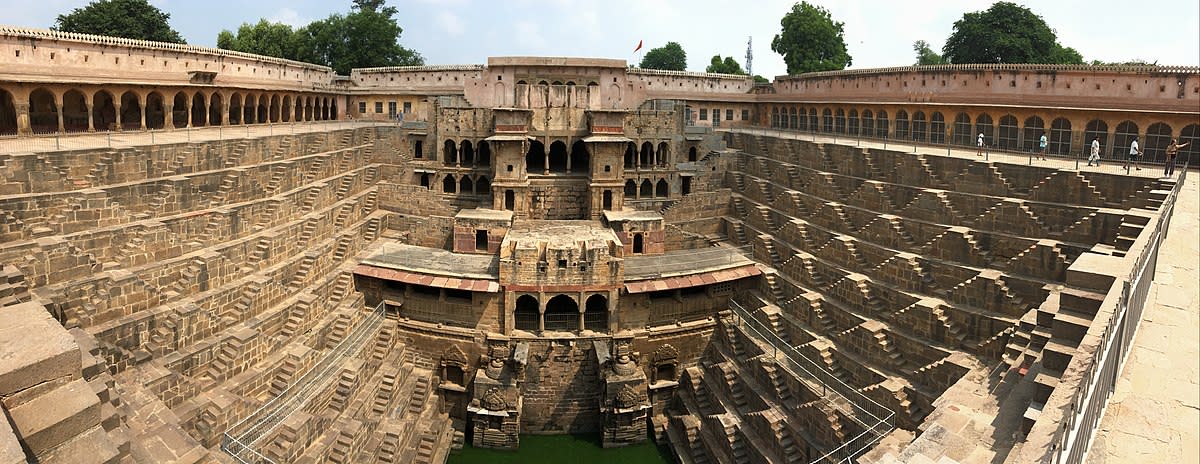Annular Solar Eclipse - May 20, 2012
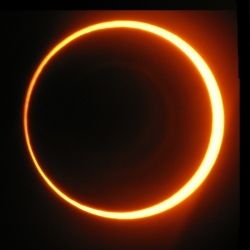
More spectacular than a partial eclipse, not as spectacular as a total solar eclipse
Update: the May 20 annular solar eclipse was a treat. Hopefully the sky was clear where you were.
An annular solar eclipse occurs when the moon passes between the Earth and the sun but is not close enough to the Earth to produce a total solar eclipse. As a result, the bulk of the sun is obscured, perhaps 95 or more percent, but there remains a small ring of sunlight surrounding the disk of the moon. This means that the damaging effects of the sun are always present during an annular eclipse. Proper eye safety goggles must be used at all times for annular eclipse viewers.
Since such a large percentage of the sun's light is blocked by the moon, the annular eclipse is more significant than a partial eclipse. A partial eclipse occurs when the moon grazes the sun, from the point of view of someone on Earth. Except for the position of the moon relative to the Earth, an annular eclipse would have been total. During an annular eclipse, there will be a very significant drop in the level of sunlight. As with a total solar eclipse, birds, animals and insects may be fooled into believing that nightfall has occurred.
While many thousands of people will travel thousands of miles to see a total solar eclipse, far fewer would put in the effort to see an annular eclipse. Most eclipse viewers would only view a partial solar eclipse if it happened to come to their location. Still, the annular eclipse can be of interest to eclipse watchers and the general public. Since so much sunlight is obscured, there will be strange effects to witness. In addition to the effect on living things, the colors in the sky will be interesting. Weather will be affected in the local area due to the lack of solar energy. The area within the path of the moon's shadow during an annular eclipse will be surrounded by bright daylight.
Photographers may be able to capture interesting images of the annular eclipse. Protective filters, such as those used in normal solar photography, are a must due to the amount of sunlight that still passes the moon. Since there is so much sunlight during an annular eclipse, the sun's corona will not be visible like it would be during a total solar eclipse.
(Introduction photo courtesy of Sancho Panza.
Solar Eclipse Jewelry
Now that the May 20, 2012 Annular Solar Eclipse is over, you can celebrate the experience. You can also prepare for the 2017 Total Solar Eclipse. How? By purchasing jewelry that reminds you of the astronomical events. Here are some nice ones.
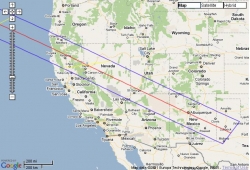
The May 20, 2012 annular eclipse
Visible in the western United States
The annular solar eclipse of May 20, 2012 came after a string of four partial eclipses seen in 2011. The annular eclipse is much more exciting than any of the partial solar eclipses. The sun nearly totally obscured for four and a half minutes. The sun appeared as a bright ring in the sky with a central dark region. Annular eclipses always have far too much sunlight streaming past the moon, so eye protection is an absolute necessity at all times.
(Click on the eclipse path map to see a higher resolution view of the May 20 eclipse at the NASA website.)
The path of this annular eclipse arrived in the western United States with Eureka, California experiencing the event first. Redding, Ca, Reno and Carson City, Nevada saw it next. Unfortunately, Las Vegas was too far from the path and so only a partial eclipse was visible there. As partial eclipses go, Las Vegas had a good one. Visitors to the resort city wanting to see the show needed to head north for the annular eclipse. St. George, Utah saw it. Flagstaff, Arizona was just out of the shadow zone. People there needed to drive north to the Grand Canyon, Glen Canyon or Shonto in order to experience the annular eclipse. The Four Corners was within the eclipse path but in Colorado, only the city of Cortez was in the path. Even there, people should have traveled south towards the Four Corners to get a better experience. In New Mexico, Albuquerque, Santa Fe and Roswell were close to the center line of the eclipse. The event wrapped up in Texas where people in Lubbock and Midland were be able to view it.
While this eclipse passed through, or near to, many cities, it was known as the Reno Eclipse. Reno is a popular little city that happens to be located in the right place. Other cities may have the same experience but Reno had the key to this eclipse. Since it is not a total solar eclipse, the event was not an absolute "must see" for many astronomers. It got attention from many people due to the action of news channels as the big day approached. This attention naturally built until the event was a large news story on May 20.
This was an easy eclipse to view. The moon shadow passed over the Earth's surface through seven states. An annular solar eclipse offers some interesting experiences. Animals and insects may be fooled into thinking that the sun has set only to rise again in moments. Many of the features seen during a total solar eclipse were be visible in this annular eclipse. It's a chance to see a rare event in America, so if you saw the event, you were lucky to do so.
Good eclipse goggles are always a must so you can watch the whole annular eclipse. These will come in handy during future partial eclipses. If you're going to Australia in November for the total solar eclipse, your goggles will be useful for the partial eclipse phases before and after the total solar eclipse event. They will also be useful in 2017 when a total solar eclipse finally returns to North America. That eclipse is the big one which will dwarf the May 20 annular event. Start planning your agenda for the 2017 total solar eclipse, little more than 5 years away. You may want to consider viewing it near Cape Girardeau, the Eclipse Capital of the US or Carbondale, the US Solar Eclipse Center.
Solar eclipse products on Amazon
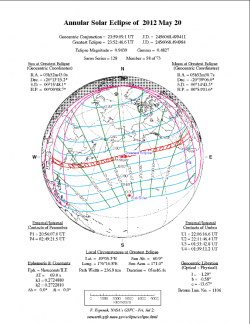
The May 20 Annular Eclipse Starts in Asia
This annular eclipse event actually starts in Asia. Millions of people will experience the effect of the moon blocking out most of the sun's light as the shadow path covers Hong Kong, Guangzhou, and Quanzhou in China. Taipei, Taiwan is also visited by the moon's shadow. The annular eclipse then tracks across the East China Sea before hitting Japan. There, the shadow tracks across the southeast portion. Tokyo and Yokohama are practically bisected by the center line of the eclipse. After Japan, the annular eclipse of May 20, 2012 again tracks across open ocean.
Click on the image to see the NASA map of this annular eclipse to see the entire track of the moon's shadow.
At the point of the greatest amount of eclipse coverage, the shadow path is located just south of the Aleutian Islands of Alaska. In fact, the annular eclipse event just barely misses any Alaskan lands. The eclipse then tracks across the open ocean again before contacting the western United States. The initial contact is in Oregon with the first sizable settlement experiencing the annular eclipse being Bandon. Crescent City California is the first sizable settlement to experience the eclipse followed quickly by Eureka, CA. From there, Redding, CA and Reno, Nevada are the next large cities to be visited by the shadow of the moon during the 2012 annular eclipse. The California capital of Sacramento is located just outside the eclipse zone. San Francisco is perhaps 100 miles from the eclipse, 150 miles from the center path of the annular eclipse event. As mentioned elsewhere, Las Vegas misses the 2012 annular eclipse as does Phoenix and Denver. The annular eclipse travels across the western United States of Oregon, California, Nevada, Utah, Colorado and New Mexico before finally ending in Texas. The city of Midland, Texas, is the last settlement to witness the effects of the May 20, 2012 annular solar eclipse.
Annular eclipse poll
Have you ever seen an annular eclipse?
Annular eclipse duel
Is it worth traveling to, and watching, an annular eclipse?
The Most Important Consideration
Eye protection is mandatory for all phases of an annular solar eclipse!




